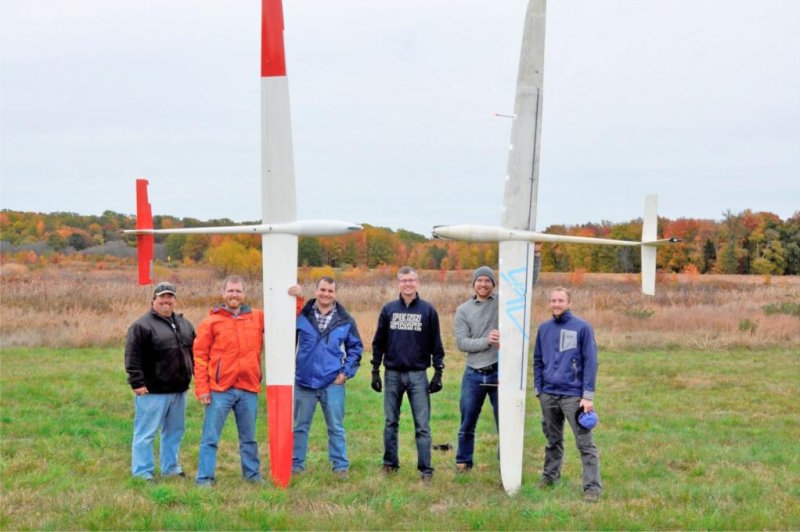The Naval Research Laboratory partnered with the Air Vehicle Intelligence and Autonomy Lab at Pennysylvania State University to launch 23 UAV flight tests over a nine-day period. Photo courtesy of the U.S. Naval Research Laboratory
WASHINGTON, Jan. 6 (UPI) -- The U.S. Naval Research Laboratory has completed a series of flight tests for unmanned aerial vehicles, demonstrating the concept of cooperative soaring using shared data.
During the tests, the Naval Research Laboratory partnered with the Air Vehicle Intelligence and Autonomy Lab at Pennsylvania State University to launch 23 flights over a nine-day period. Researchers tested cooperative autonomous soaring algorithms used to keep two UAVs in flight for sustained durations.
Dr. Dan Edwards, the aerospace engineer and principle investigator of the solar-soaring program, compared the idea of using multiple UAVs in sequence to create sustained flight durations to the technique used by flocks of birds in flight.
"Autonomous soaring algorithms seek out naturally occurring areas of rising air called thermals," Edwards explained. "Cooperative autonomous soaring combines data from multiple autonomous soaring aircraft to make a more complete measurement of the local atmospheric conditions."
Both aircraft used demonstrated increased soaring capabilities during the flight tests, flying several 2.5-hour flights while using batteries designed to only run the motor for four minutes. The best soaring flight was clocked at 5.3 hours. The motor propeller was used for only 27 minutes of the flight.
The Naval Research Lab says future tests will focus on the separation distance of the aircraft in flight, allowing the aircraft to actively soar at the same altitude.
Researchers are also examining technology that would use solar radiation to charge batteries, further increasing aircraft payloads and flight endurance.















